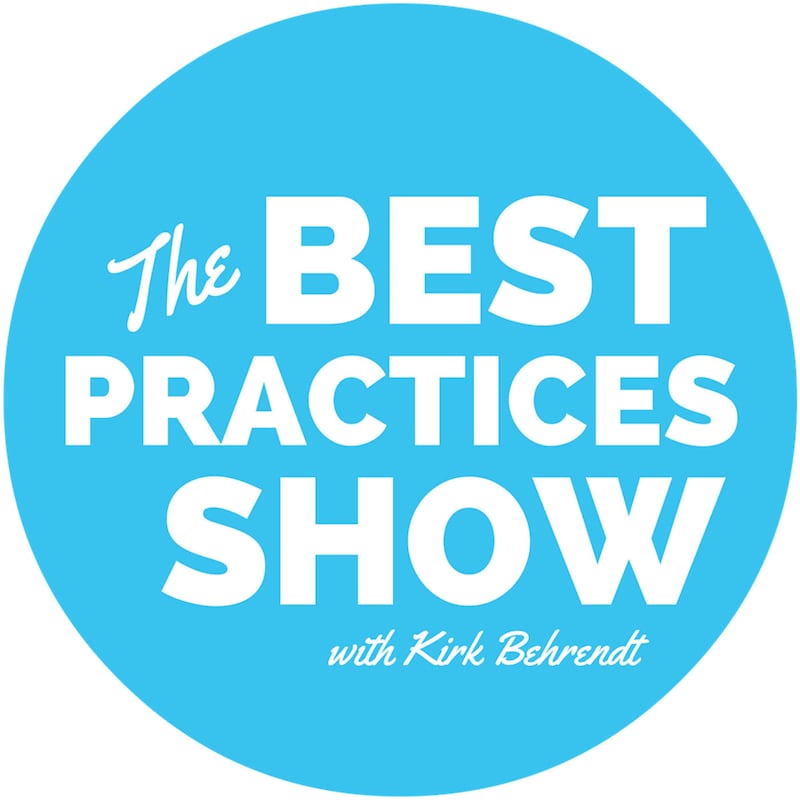Dr. James Woodyard is a top periodontist in Newburgh, IN. He is a brilliant clinician, a great person, a great dad, and a friend of mine. He has diplomate status with the American Board of Periodontology, and is the only ABP board certified periodontist in his area. He has memberships in many professional organizations. He also founded the Select Study Club which is a branch of the Seattle Study Club.
We have a great discussion where we talk about the single biggest missed opportunity in restorative dentistry. We talk about how dentists need to slow down and find the underlying cause of what is creating problems. Time should be taken to get a proper diagnosis before any work is done. Dentistry can be a solitary profession. Having a great team of other specialists to work with and share knowledge with will only make you a better and more successful dentist.
You can find Dr. James Woodyard here:
Woodyard Periodontics
Woodyard Periodontics on Facebook
DRW@WoodyardPerio.com
Show Notes
[02:49] Dr. Woodyard lives in Evansville, IN and practices in Newburgh, IN. His father-in-law and brother are dentists and Dr. Woodyard loves what he does.
[03:32] One of the biggest missed opportunities is diagnosis and finding out why something is happening before treatment.
[04:27] Why is there under diagnosis in dentistry. I think dentists are afraid of people saying no.
[05:50] Loose teeth isn't a diagnosis. Why the teeth are loose is the problem. The diagnosis is key. Once you have that you can move on and do other things.
[06:43] Tell the patient that you are going to find out what is happening and treat them. Treat them like royalty like you treat those new patients.
[08:09] When problems present themselves people need treatment.
[09:03] It's not our right to decide how healthy a patient's mouth should be.
[11:13] Diagnosis is neutral. It's our job to allow patients to make the best informed choice. Slow down and make sure that you get all of the data that you need.
[13:12] Link up with a good periodontist and other specialists that will help you and educate you.
[13:41] There are humans attached to these teeth and new dentists have a business to run.
[14:13] Dr. Woodyard started Select Study Club to help educate other dentist. It is a non-threatening environment where people can talk.
[15:32] Being a facilitator in the study club and finding what people need to learn. After the meeting is over, people are coming together. Being a dentist can be isolating.
[17:06] The mark of a great leader is helping people grow.
[17:26] Asking what is the right thing for the patient and the right thing for yourself as a dentist. Upping your game and doing the right thing.
[18:43] Every dentist is a specialist. Know your limitations.
[19:35] Who do you want to deliver your baby? A specialist.
[19:58] You will be more productive if you do the same things everyday.
[20:51] Diagnosis is working with a great specialist and starting a dialogue. Helping each other and having each other's backs.
[22:00] Photos are huge in diagnosis.
[22:38] Proper diagnosis takes a lot of training. Take pictures or make models and communicate that to the patient.
[23:34] Bringing cases to the study club and using visual communication enables us to do more.
[24:19] It's important to focus on what you are good at. Spend a lot of time on diagnosis and present that information to the patient in a way that they will understand.
[24:35] Slow things down, get an extra set of eyes, and have a certain level of accountability.
[25:16] Dr. Woodyard is a better periodontist because he knows more about other disciplines.
[25:55] Get the right diagnosis before starting work. Nothing we do lasts forever. Some of the best money a human can invest is in their mouth.
[27:02] A little bleeding. People don't see things in their mouth. If you wait for something to hurt, there is going to be trouble.
[28:15] Inflammation is what causes problems.
[28:55] Young dentists who buy a practice should spend extra time on the diagnosis. Share the problems, the risks, and the solutions, and then the treatment.
[30:12] Don't treat before establishing a clear why. Spend time talking to the patient. Use open ended questions. Find the barriers and the fit issues. Gear the conversation to their wants and needs. Then you can present the treatment and know exactly what you are talking about.
[32:58] Be really honest with people and let them know that you really want to help them. Be honest, build trust, and have a system to diagnose the symptoms.
[33:54] You have to go through the steps even with established patients.
[34:50] Establishing the why in interdisciplinary treatment planning. The four pillars of diagnosis. Structure, function, biology, and aesthetic.
[35:06] The fifth pillar is understanding someone's story. Half of the exam is about the data, but half is about really understanding the patients story.
[35:29] Shake every patients hand and make them feel comfortable and open up a little bit about yourself.
[37:50] Slow down and take the time to listen.
Links and Resources:
Seattle Study Club
Woodyard Periodontics
Woodyard Periodontics on Facebook
DRW@WoodyardPerio.com




